Switch to the mobile version of this page.
Vermont's Independent Voice
- News
- Arts+Culture
- Home+Design
- Food
- Cannabis
- Music
- On Screen
- Events
- Jobs
- Obituaries
- Classifieds
- Personals
Browse News
Departments
Browse Arts + Culture
View All
local resources
Browse Food + Drink
View All
Browse Cannabis
View All
-
Culture

'Cannasations' Podcaster Kris Brown Aims to 'Humanize'…
-
True 802

A Burlington Cannabis Shop Plans to Host…
-
Business

Judge Tosses Burlington Cannabiz Owner's Lawsuit
-
Health + Fitness

Vermont's Cannabis Nurse Hotline Answers Health Questions…
-
Business

Waterbury Couple Buy Rare Vermont Cannabis License
Browse Music
View All
Browse On Screen
Browse Events
Browse Classifieds
Browse Personals
-

If you're looking for "I Spys," dating or LTRs, this is your scene.
View Profiles
Special Reports
Pubs+More
Between a 'Hub' and a Hard Place: Three Stories of Opioid Addiction in Rural Vermont
Published June 5, 2019 at 10:00 a.m.
In his 2015 book Chasing the Scream, journalist Johann Hari writes, "The opposite of addiction isn't sobriety. It's connection," a quote I thought of often as I spoke to people for this story. From Enosburgh to Wilmington, addiction is both flourishing in isolation and creating it: in rural towns where it's easier to get drugs than to get treatment; in the judgment of communities that don't understand that addiction is a disease.
While service providers throughout the state are working to address the obstacles to connection and to sobriety, many of those barriers are unknown.
"We don't really know ... what is lacking, or where," said Chad Simmons, project coordinator for the Windham County Consortium on Substance Use. His is one of two Vermont groups awarded a 2018 federal planning grant to explore access to opioid-abuse prevention and treatment services in rural populations. "That's one of the big questions we're trying to answer: What does it look like for folks outside the major population areas in our community? ... What is getting in the way of them finding support, getting into treatment, healing?"
Melinda White is a member of the second Vermont group to receive one of the grants, the Franklin Grand Isle Opioid Response Consortium. She noted that statistics around treatment for opioid-use disorder suggest that "Vermont has done an amazing job at helping people to access treatment — there's no wait list" at the clinics. But, White added, "Those statistics are based on people we're having contact with. What about all the people we aren't reaching?
"We talk about meeting people where they're at," said White, who is the medication-assisted treatment care coordinator at Northwestern Medical Center in St. Albans, but this is a message delivered by service providers "sitting in desk chairs ... We have to get off our butts ... and go out to those communities to meet people where they're at. Exactly the way it sounds."
In the meantime, Vermonters are both suffering in isolation and working to create the connection that is the opposite of addiction. Here are stories of an individual with opioid-use disorder stranded in a town without treatment; volunteer drivers in a county without a clinic; and community members who are educating themselves and spreading the word that addiction is a disease and our neighbors need our help.
Sierra
When I googled Sierra LaCoste's name, I found headlines that seemed like they should be followed by exclamation points: "Gangs and Guns"; "Addiction Fuels Guns-for-Drugs Pipeline Into Vermont"; "Five Charged With Buying Weapons for Boston Gang."
When I googled her Enosburgh address, I didn't find anything at all; it is literally not on the map.
But when I drove 20 miles northeast of St. Albans on Route 105, past fields and barns, a creemee stand and a feed store, to the trailer she shares with her dad and stepmom, I found Sierra herself: a young woman with a button nose and a thick scar bisecting her chest, her glossy hair cut in a bob that curls toward her jaw. I settled into a comfortable love seat as Sierra apologized for the mess, though there was none — her home was spotless. While a cat nuzzled at my sleeve and her dad and stepmom slept in their bedroom down the hall, Sierra told me how she went from being a happy kid in a close-knit family to a woman who bought guns for members of a Boston gang to fuel her addiction. How, growing up in a small town in rural Vermont, she didn't even know what opioid addiction was until she herself was addicted, and the barriers she faced when she tried to quit.
"You blink and you miss it," Sierra said of Sheldon, the Franklin County town of about 2,000 people where she grew up. She had what she described as a happy childhood there — weekends were spent fishing or apple picking; on the first day of deer season every year there was a family breakfast before her grandfather headed out to hunt.
But her transition to high school was "the worst," she said. Because her town didn't have its own high school, students from Sheldon chose among neighboring districts. Sierra opted for Enosburgh, where her dad moved after her parents divorced, but she knew very few kids there. She struggled academically because of what she believes is an undiagnosed learning disability, and things were difficult socially, too: "I felt out of place because I was heavier," she said.
For three years straight, she would attend the first few weeks of her freshman year, "and then I would just get too overwhelmed, and I wouldn't go back."
Instead she got a job at a Sheldon deli. When some kids she knew from growing up asked if she could find certain types of pills, she checked the medicine cabinets of her family members. It turned out "every single person in my family was on narcotics," she said. She began stealing her relatives' prescribed opioids, which she would sell so she could buy "shoes that weren't Payless and clothes I wanted," versus what her grandmother got her.
And "I loved the attention from my peers," she said, something she'd never had before. "Everybody in that group accepted me. I don't know if it was because of the drugs or because they all felt like outcasts, too."
Sierra herself didn't become addicted to opioids until she was 18 and a dentist prescribed her Vicodin, which a friend told her she could crush and snort. "I loved the feeling," she said, "so after my prescription ran out I went back to the dentist to get more." When the dentist cut her off, she began stealing her family's prescriptions not to sell but to use herself.
Though she was often sick and began to have trouble going to work at the deli, she had no idea she was addicted. "I didn't know what dopesick was. The way people have always talked about drug addicts, I'm thinking ... they're losing their teeth, they wear grimy clothes and don't shower," she said. "That's what I thought drug addicts looked like, and I didn't look like that."
By the time she "finally caught on that the only time I felt good was when I snorted something ... [the drugs] had control of me; I didn't have control of them." She tried stopping but became too sick.
When I asked if she considered rehab, she said she thought it was "like juvy, like it was going to jail. I was told you'd get a record. I was more afraid of going to rehab than trying to detox myself."
Rural isolation is not just geographical, according to Northwestern Medical's White; information may be less accessible, as well. "A lot of communities that I see suffering," she said, "don't even know what's available."
When Sierra's grandparents died within a month of each other in 2013, she decided to get off drugs. "I was like, 'This is enough,'" she said. "'I want to be better, if not for myself, for my family, for my grandparents."
The year Sierra tried to get help was the same one Vermont officially launched the Care Alliance for Opioid Addiction, also known as "hub-and-spoke." This statewide network of clinics (hubs) and office-based prescribers (spokes) was intended to provide statewide medication-assisted treatment (MAT), the most effective treatment for opioid-use disorder.
Beth Tanzman, executive director of Vermont Blueprint for Health, explained that the hubs are the "experts on addiction," similar to the way an oncologist is an expert on cancer. In contrast, the majority of spoke providers are primary care physicians, who need to be "experts on a hundred different conditions." They "won't have as deep a bench" when it comes to specialized treatment, she said, whether that's for opioid-use disorder or for cancer, but can administer care when patients are stabilized.
"Vermonters can be rightfully proud of hub-and-spoke," she said, which has become a national model for treatment of opioid-use disorder. As of January 2019, 8,500 people were receiving MAT in Vermont, or 1.7 percent of the adult population, the highest per capita of any state.
But, she acknowledged, "It's not good enough yet. We still have people dying, and we still have access issues."
Seven cities throughout Vermont, from Newport to Brattleboro, and one over the border in New Hampshire are homes to hubs. The infrastructure required for a hub "makes it pretty hard to do if you're going to have fewer than 300 clients," said Tanzman, "and you're not going to get 300 patients in Concord or Island Pond."
While the spokes are designed to bring MAT to smaller, rural communities, many patients, especially those in early recovery from opioid-use disorder, require the specialized treatment that is available only at a hub, and must be seen there every day to get their medicine. If and when they require less intensive treatment, they can transfer to a spoke — if one exists and is accepting new patients in their community.
There are 239 MAT prescribers at 89 spokes throughout the state, but more than half are in Chittenden County or towns where there are also hubs. And according to Megan Mitchell, director of clinical services with the Vermont Department of Health's Alcohol and Drug Abuse Programs, "the number of spokes doesn't indicate the need is being met. You can have a spoke who only sees two people."
A 2017 evaluation of hub-and-spoke that looked at the experiences of 80 patients found that the mean travel time to treatment was just under 20 minutes, with a range of five minutes to two hours. Twenty minutes doesn't seem like a huge commute, unless you live someplace rural and don't have a car, which was the case for Sierra when she sought help.
She and her civil partner, Laci Baker, had moved in with Sierra's dad in Enosburgh; at the time the nearest hub was in Newport, 40 miles away. "It was such a process getting to the clinic," Sierra said. They relied on family or friends for rides or to borrow a car to make the two-hour trip, and they also had to pay for fuel: "There were so many times I ran out of gas on my way back," Sierra said.
She and Laci might go for a week straight and then miss days because they couldn't get up to Newport. When a hub opened in St. Albans in 2017 they transferred there, which was 20 instead of 40 miles away, but transportation was still an issue.
"It was easier and cheaper to buy off the street in Enosburgh than it was to get to [the clinic] every day," Sierra said. Usually they bought Suboxone, the medicine they were prescribed at the hub. But "once in a while we would use opiates," she said, "because that's all we could find."
Sierra was surprised to learn there was no expectation at the hub that she abstain from all drugs; her clinician indicated this was in fact unlikely: "She said that usually in the beginning of trying to get sober, people trade one drug for another." Benzodiazepines, a class of drugs that interact dangerously with opioids and which Sierra had never used, were not permitted, but she could test positive for stimulants and opioids and still receive her medicine.
John Brooklyn, who is medical director of the hubs in Burlington and St. Albans, explained the rationale behind this policy: "We need to hang on to someone no matter what," he said. "If you love heroin and shoot 10 bags a week and go on methadone and shoot one, that's good. Every day you're not sticking a needle in your arm is a good day.
"Two hundred people die every day," he went on, citing national statistics on drug overdoses. "My bar is really low ... I just want more people not dying and the rest of it is up to them."
To critics who say people are "getting away with" using drugs while on MAT, Brooklyn pointed out that diabetics "get away with" eating candy while on insulin; their doctors don't stop providing treatment.
According to research by Harvard Medical School professor John Kelly, it takes the average person with opioid-use disorder eight years and four to five attempts at treatment to stay sober for one year; kicking them out for relapse or continued use would undermine their ability to ultimately recover.
But it's equally important to keep people safe when they are actively using, with measures that include access to clean needles to prevent disease and the opioid-overdose-reversing drug Narcan. The latter is available in St. Albans, but the closest syringe exchange to Sierra was 45 miles away in Burlington.
Soon after she started going to the clinic, Sierra did in fact "trade one drug for another," as her clinician predicted she would. MAT kept her from getting dopesick without opioids, but it didn't address the disconnection and insecurity at the root of her addiction. Without having to buy pills off the street, she could now afford crack and powder cocaine, to which she soon became addicted. She had never used drugs intravenously before, but she began injecting cocaine, using syringes she bought at Walmart when she could get there and afford them. But she often ended up reusing needles.
In 2017, a friend told Sierra there were some guys in Swanton who came up from Boston and would pay her and Laci in drugs to run errands for them, everything from getting McDonald's to shoplifting toiletries. It was, she said, "the easiest thing we had done to get crack."
When Sierra's friend asked her if she would buy a gun for one of the men, she said, "I didn't think about what I was doing ... I was going to get high no matter what, and I didn't have any money in my pocket to do it." Her friend gave her a little bit of crack to smoke before she went and promised her a lot more when she got back. Over the next couple of months she would purchase a half dozen guns on behalf of the men, who, it turned out, were members of the Latin Kings, a gang from Boston that brought crack up to sell in Franklin County and guns back down to the city.
By the time the Latin Kings left Swanton, Sierra had contracted endocarditis, an infection of the heart lining, from injecting cocaine. She spent seven weeks in the hospital, but she was "still doing drugs in the bathroom ... thinking that I was invincible." She continued to use after she was released; when her condition worsened, doctors had to perform surgery to replace two damaged valves in her heart.
This time she was hospitalized for 10 weeks; when she was finally released, Sierra was determined to stay sober. But again she couldn't find rides to the clinic for her medication, and "Laci was using," she said. "It's hard to stay sober when somebody is in the next room using."
"It felt like a relief," she said of getting arrested on charges related to the gun purchases several months later, in September 2018. She felt guilty — "every night I was watching the news to see if there were shootings in the areas where the guns went." And she wanted to stop using drugs but didn't know how.
While she was incarcerated she developed a blood infection and spent another eight weeks in the hospital; she went straight from there to court-mandated rehab at Valley Vista in Vergennes. Which, it turns out, was nothing like juvy.
Sierra has been sober for more than eight months, and she has a stack of brightly colored coins she received at Narcotics Anonymous meetings to prove it. The only outward sign now of all she has been through is the thick red scar that emerges from the neckline of her green blouse. It's hard to believe the soft-spoken young woman with an easy laugh who cares for her disabled parents is the same person who used to steal their medication and bought guns for a Boston gang to support her addiction. It's even harder to imagine her relapsing.
But all of the barriers to recovery that existed before she went to rehab still remain. For a long time Sierra wasn't even aware of the services available to help her get and stay sober. Now she knows they exist, just not in her rural community.
Laci was arrested at the same time as Sierra and also went to court-mandated rehab, but when she got out she moved to sober housing in Burlington, while Sierra returned to Enosburgh to care for her parents. The two women are still a couple, and the difference in their post-rehab experiences is stark.
Laci transitioned from residential rehab to an intensive outpatient program, where she continued to receive comprehensive addiction treatment; there is no IOP in Enosburgh.
In Burlington there are multiple 12-step meetings and other recovery programming every day. In Enosburgh there is one Alcoholics Anonymous meeting a week; the closest NA meetings are in St. Albans.
Laci lives in sober housing, of which there are multiple options in Burlington; there is no sober housing for women in all of Franklin County.
But the biggest disparity is access to treatment.
Ample public transportation in Burlington makes it easy for Laci to get to the clinic every day for her medication. Traveling daily to the clinic in St. Albans from her home in Enosburgh is still unmanageable for Sierra without a car, and there's a wait list at the one spoke in Enosburgh. So she has been "double dosing," an arrangement where she takes two doses of medication at the clinic on one day and skips the next.
"That's not a technical term by any means," said the health department's Mitchell of "double dosing," but there are doctors "who have been looking at options around dosing schedules ... for Vermonters for whom travel is tough."
On the day Sierra receives her medication she feels well: "I can clean," she said. "I can actually get things done. But the second day comes around and I'm just drained, and my restless legs are horrendous."
Medicaid recipients may be eligible for rides to medical appointments, but when I asked Sierra, who is on Medicaid, if she'd applied, she said she'd been denied. There's a bus that could pick her up at her dad's trailer, but to qualify she would need to ride it every day, which is not an option while caring for her parents. She was told she wasn't eligible for individual rides because Google Maps had revealed a car in the driveway of her family's trailer.
Elaine Haytko, executive director of the Vermont Public Transportation Association, which holds the contract with the state to provide Medicaid rides, said it is "not accurate" that her agency uses Google Maps to decide eligibility. But she said Sierra's application would trigger a Department of Motor Vehicles search to determine whether there were cars registered to or licensed drivers living at Sierra's address. If so, she would need to provide documentation explaining why she needs transportation assistance.
The state spends $14 million a year on Medicaid rides, two out of five of which are what Haytko described as "opioid rides," to receive MAT or addiction counseling, for example. As Haytko put it, "these folks are sometimes super challenged" and "chronically not there" when their rides show up, which in turn results in "a real expense to our system."
But the barriers to getting rides can be prohibitive and are also ultimately a real expense to our system. Northwestern Medical's White described one man whose mother had a car and was told that his mom would have to get a note from her employer indicating she could not take time off from work to drive her adult son to the clinic. Another man lived at an address that had cars registered to it, but the vehicles weren't working. Medicaid required that he get a note from a mechanic certifying their condition, but because the cars were not running, there was no way to get them to a mechanic.
"There are forms for everything," Haytko acknowledged, while noting that "health outcomes are so much better when people have transportation."
Health and other outcomes are also better when people with opioid-use disorder have access to treatment: "People on MAT have lower emergency department use, lower hospital costs and lower rates of incarceration," said Tanzman of Blueprint — stats that helped her group justify the investment in hub-and-spoke.
In Sierra's case, the cost to taxpayers of not making that treatment accessible included the price of incarceration, heart surgery and three seven- to 10-week hospitalizations.
Regardless of the obstacles she faces, Sierra is now committed to recovery. She said she thanked the federal agent who initiated the investigation that resulted in her arrest and has written a note to the judge expressing her gratitude for mandating she go to rehab. "It was something I had to do to stay out of jail," she said, but she uses the tools she learned there every day.
Sierra will be sentenced August 5 on the charges related to the gun purchases, to which she pled guilty, and could serve up to five years in federal prison, where she would not be allowed to receive MAT. But when I asked her about the future she saw for herself, she mentioned going to college to become a social worker, "or even starting a sober house up our way for women," she said hopefully. "I was actually looking online last night at old B&Bs and empty motels. I was dreamin'."
The Bishops
Addison County is geographically the fourth-largest county in Vermont. Its 766 square miles stretch from Ferrisburgh to Orwell along Lake Champlain on the west, and from Starksboro to Hancock on the county's mountainous eastern border, which includes the highest point of the Lincoln Gap. When weather forecasters talk about heavy snowfall in the western Greens, "they're talking about us," said Dave Bishop, who lives in Goshen with his wife, Jan. The county epitomizes "you can't get there from here," especially during Vermont winters.
That makes the transportation services provided by Addison County Transit Resources essential for people with opioid-use disorder. Eligible Medicaid recipients can use ACTR for rides to medical appointments, including addiction treatment. There is no hub in Addison County, so ACTR transports people to the Chittenden Clinic in Burlington and West Ridge Center in Rutland, as well as to the spoke in Bristol. In 2018, ACTR provided 12,586 one-way trips to MAT, many facilitated by drivers like Dave Bishop.
Dave, who began volunteering for ACTR three years ago, said providing rides "fits me like a glove." He enjoys talking to the people he drives and has developed friendships with many of them. "When you get people in the car and you're driving for even a half hour," he said, "you have these conversations with people that are amazing."
"You know how you tell your hairdresser everything?" Jan asked. "Dave's that hairdresser."
The first time I met the Bishops was at their home in Goshen, which is perched at the end of a dirt road, off a paved one that winds up the side of a mountain beside a river flowing in the other direction. "I got carsick the first time he brought me here," Jan told me of the house where she and Dave have lived and raised four daughters over the past 25 years. "But I love it now."
They light bonfires in the yard, and 20 years ago Dave built a sugarhouse that quickly became a gathering place for friends and family.
"Every board, every nail — everything that's in here I put here," Dave said about the sugarhouse; he is the kind of guy who can build or repair just about anything. But the one thing he hasn't been able to fix is his daughter, whom I will call L.; she has struggled with addiction for the past decade. In the cement beneath the evaporator he installed a few years ago are four handprints next to four sets of initials, one for each of Dave and Jan's daughters. But the handprint next to L.'s initials actually belongs to one of her sisters. L. "always seems to be absent," her father said.
Growing up, L. was a bright student who excelled at math — "it's amazing how her mind works," Dave said proudly — and a talented athlete who often earned MVP at basketball tournaments. As far as her parents know, she didn't use drugs of any sort as a teenager, and when she graduated from high school, it was her dad, who was on the school board, who presented her diploma. "I would never, ever, ever, ever have thought that she would have this kind of a problem she has now," he said.
For nearly a decade L. has struggled with opioid addiction, and "there's been some scary, scary, scary moments," he said.
L. has OD'd twice that her parents know of, the first time at their home. Jan was downstairs waiting for L. to pack for rehab when she heard a strange sound from the second floor. When she got upstairs she found her daughter unconscious: "She was blue and cold feeling, chilled ... I had to do CPR on her and bring her back. I didn't have Narcan, I just started pumping on her chest."
Another time they'd put a tracker on her phone and, when they hadn't heard from her, used it to locate her: She was at Rutland Regional Medical Center. "She had overdosed," Jan said, "and whoever's house she was in, they took her and threw her in the bushes, because they didn't want to be associated with it." A friend of L.'s later told Jan she called an ambulance because she didn't want to see her die.
"She would go to rehab and go to rehab and go to rehab," Dave said, more times than they can count. And every time, she's "a star student," he told me. "I mean, she could write the book. She comes out of there with everybody's her friend ... The people that are running the program are like, 'My God, that girl's got it on.'"
In 2015, after being charged with felony conspiracy to distribute heroin and cocaine base, L. was among the first three Vermonters to enter federal drug court, an alternative to incarceration that offers services and supervision to people whose crimes were motivated by addiction. A little over a year later, she was the only one to graduate from the program. Both of the other women had relapsed; one was in a coma, the other incarcerated. This time it was U.S. Sen. Patrick Leahy (D-Vt.) who handed her a diploma.
For three years L. stayed sober. She worked and went to college at night while raising three kids and attending 12-step meetings whenever she could.
Dave and Jan think she was overwhelmed: "Somebody who's not in recovery can't even do all that," said Dave. As her life stabilized, L. went off MAT and relapsed, eventually sinking to her lowest of lows: She is now homeless. She once again has charges pending. She has lost custody of her kids.
"There's three ways out of this for her now," said Dave. "Recovery, jail or death, and that's it. She's sliding toward the latter two right now."
Around the time L. entered drug court, Dave had a brain tumor removed. Complications from the surgery led to a traumatic brain injury, and as a result he has PTSD. "When I'm stressed I start stuttering," he said. "I can't think. I shut down."
His disability eventually forced him to leave his 35-year career as an automobile service technician and manager. He immediately began volunteer driving for ACTR, which he learned about through L., who had used the service at one point while living with her parents.
He estimated that 30 percent or more of his clients have opioid-use disorder, the same disease as his daughter. These riders have helped him understand L., even as his contact with her has diminished.
After her most recent relapse, "I literally had to walk away from L., because I couldn't deal with the stress in my head," he said. "It's not that I didn't want to help," but the stress has physical consequences. If she ever wants a ride to rehab, though, he said, "I'll do whatever it takes to get her there." In the meantime, driving others with opioid-use disorder is "what's helped me get through this," he said.
"Without our service connect[ing] people, young and old, to the clinics, they would implode immediately," he said. "They'd literally tell you, 'If I didn't have the clinic, a matter of days and I'd be using.'"
"And if they didn't have this ride," Jan said, "they wouldn't be able to get there."
Dave's passengers give him hope for his daughter. He doesn't use L.'s name when he talks to clients, but when he described her situation to one woman, she told him, "'I was even worse.'"
He's seen other people transform their lives, as well: "They hold down a job, they're getting their license back, they're getting their kids back, they're making better lives for themselves."
He also takes inspiration from the people who "struggle every day, yet they're still going for their dose. When you see these people that have got only a few threads to hang onto but they're still doing it, that's what gives me hope for L."
Driving has also helped Dave better understand addiction and the things L. has done because of it.
"I just couldn't believe it," he said of seeing bank videos of L. using her mom's ATM card to withdraw thousands of dollars Dave had planned to use to build a garage. "You literally can't believe it."
But talking to clients he found that "almost a hundred percent of them have stolen from their family and friends, neighbors, you name it." They do it, he said "to support their habit — they will literally do anything to not be sick."
One client explained to him that "'it's like there's a ghost of yourself, the old, good you, that follows the drug addict self and watches them do all this bad stuff, and you can't do anything about it.'"
He has witnessed the hold that drugs have even on people in solid recovery — how "their face lights up" when they talk about using — and the many barriers to that recovery, for his daughter and for others.
Though he provides rides, he knows many people don't or can't access them. Some are unaware they're eligible, he said, and they rule out treatment because they don't think it's possible to get there. For people who are aware of the service, the paperwork — including verifications from mechanics and insurance carriers and the employers of people in the household who own cars — can be too much. "That's the Great Wall of China to them," he said. "Addicts need the path of least resistance to recovery."
The Bishops have bought Christmas presents for the children of clients and donated furniture to someone moving into a new apartment; they helped someone else get a car. Dave has also driven people on his own when they weren't eligible for an ACTR ride and he knew that the consequences of not getting someplace — for example, to a court date — would ripple throughout the person's life.
Like both a hairdresser and a worried dad, Dave dispenses advice to his clients, the most critical of which is to take baby steps: "I always tell them, 'Don't take big steps, because if you fall backward, it's a long way. Take little steps and just keep moving forward a little at a time, and the next thing you know you've gone a long ways."
It's advice he wishes he could give his daughter. "If I could get her in a car, and she didn't realize I was her father, we could probably have one of the best conversations," he said, "because I really do understand now. I really understand how hard it is to be an addict, what drives people to be an addict, what it's like to be in recovery. I literally know that now."
The Town of Wilmington
"They say it takes a community to raise a child," Cheryl Rusin told me, "and that's what happened here."
Here is Wilmington, a Windham County town of about 1,800 people tucked between two mountains in the Deerfield Valley, where I was introduced to Cheryl at a meeting of the town's opioid task force. In 2018, 24 people died in Windham County from overdosing on opioids, the highest number of any county in the state and one that jumped by 700 percent from 2013, when three people died there.
Two of those 2018 OD deaths occurred in the Deerfield Valley within 10 days last June, and the task force was formed as the community grappled with how to respond.
"The best years of my life were raising my kids here," Cheryl said of the town when her four children were growing up. "We had this run of, My God, my life is so perfect. I don't deserve this."
When they were teenagers, Cheryl's two sons transferred to a high school in North Carolina, where they lived with their dad. Her youngest, Connor, who was 15, was able to play football there, and he excelled at it, as he did with all sports. But he sustained multiple injuries on the field, including a broken back that went undiagnosed.
"Some time in his sophomore or junior year it started with the oxy," his mom said, referring to the opioid-based pain reliever oxycodone. But he was what Cheryl called a "functional addict" — she knew he experienced pain from the sports injuries, but when she saw him he seemed "fine." After graduating high school he attended two years of community college in North Carolina.
When Connor was 20, Cheryl got a call from her husband telling her he was sending their son home to Vermont.
"When he left here at 15 and when he came back he was a different kid," Cheryl said; he was now addicted to opioid-based painkillers. But he was still, as she put it, "an old soul" — kind and charismatic and generous, someone who got along better with older people than kids his own age. He moved in with her, and she immediately began addressing his injuries and addiction. He had surgery on his back and went to the first of what would be many rehabs.
But after he returned to Wilmington, he began using heroin, and in spite of his mom's attempts to get him help, his addiction worsened. "It's almost like something demonic takes them over," Cheryl said of people struggling with opioid-use disorder, making it hard for them "to even make a simple decision between right and wrong."
In photos, Connor's hair is buzzed short, the ruler-straight edges of his hairline framing his handsome face. He has his mom's dark brown eyes and a mouth that seems to rest naturally in a half grin. In one photo he's in midair, dunking a basketball; in another he's wearing a padded compression shirt, his muscular arms slick with sweat from playing football. A third is a mugshot; Connor stands against a white wall, one eyebrow cocked, after he and four others were arrested and charged with using a firearm while selling or dispensing drugs.
For five years, Connor struggled with his addiction, and his mom fought right alongside him. Cheryl researched rehabs, she took him over the mountains to NA meetings in Brattleboro and Bennington — there weren't any in Wilmington. "What I loved was ... how he engaged, how he read," at the meetings, she said. "Oh my God, I was proud of him. And I was like, We're getting there." He received MAT for a while, got a job at the company that employed his sister, and later with Cheryl at her landscaping business.
But he relapsed repeatedly, left or was kicked out of rehabs, lied to and stole from his family, and sometimes disappeared into Brattleboro, where Cheryl would drive around looking for him.
Her other kids would say to their brother, "'Connor, you're killing our mom,'" but she told him, "'No matter what, even if you take me down with you, I've got your back, hon. No matter what, I will never leave you. I will never leave you.'
"When they're reaching out," she said, "extending their arms, there better be someone that grabs on." And Cheryl always did. But when she reached out to her own community for help, it wasn't there.
In 2015, she and Connor attended a series of community meetings about the opioid epidemic. Connor shared recommendations about how to support people with opioid-use disorder, and Cheryl asked for help. "I'm very private, and for three years I'd been struggling and had kept this to myself," she said, but she spoke up at a meeting: "I said, 'I have been struggling for three years and I need help ... I don't know what to do to help this kid.'"
But according to Cheryl, "no one knew what to do," with one notable exception: The town nurse, Jennifer Fitzgerald, "gave me a direction to the steps to start taking," she said, and "held my hand for a very long time." The rest of the community met her mostly with silence. "When people are afraid — and so many people are afraid of this — they can't get away from it fast enough," she said. "And I felt that. I had people in town walk past me with their eyes down if they read something about him in the newspaper, if he got arrested."
Connor experienced the stigma too, "every day," according to his mom. People with opioid-use disorder are made to feel "they don't belong, they're not welcome," she said.
Last spring, Cheryl saw the signs she had been looking for in her son. "I had for so long waited to hear things that made him excited, future plans, and I finally heard them. 'Mom, we're going to start a new business, we're going to have a hosta and lily farm and call it Uncle Con's,'" he told her. He wanted to go back to school and get his degree in landscape design. His siblings were welcoming him back into their lives.
"I'm like, 'Oh my gosh, he wants this,'" said Cheryl. "'He finally wants this, it's not just me.'"
On June 12 last year, Cheryl and Connor returned home from an "awesome day" at work together. "We kicked butt," Cheryl said, "just a whirlwind. We came in the house, he goes, 'Mom, I'm going down to take a shower, I'll see you when I come up.' His boys were the Temptations, he sounded just like ... the lead singer, and every day he would sing one of their songs. I'm upstairs in the kitchen and there he is downstairs and I can hear him singing, and then I don't hear him singing. I'm doing paperwork, maybe half an hour went by, I don't hear the shower, I think, What the heck, and I go downstairs, knock on the door, I open the door, and I found him."
She called 911 and then she prayed as she gave her son CPR: "I said, 'God, can you just give him one more chance, please.' But it came to me: He'd used all of them already."
The month after Connor and another individual in the community overdosed and died, the town of Wilmington, in shock and grieving, held a meeting to address what had happened. Thirty-five people attended, including Cheryl.
To prepare for the meeting, Cindy Hayford, director of the Deerfield Valley Community Partnership, reviewed the notes from the 2015 forums where Cheryl reached out while Connor was struggling.
"The thing that really blew our minds ... was looking at the minutes from those 2015 meetings and finding that not much has changed in terms of creating a community supportive of people suffering from addiction or in recovery," she wrote to me in an email. "I literally was able to use the same PowerPoint presentation with a few tweaks when this new group started meeting" because so little had changed in the town, which she found "disheartening."
And it is indeed disheartening that two people had to die for a community to take action on a crisis that many people I spoke with said had been simmering for years. But if the opposite of addiction is connection, the community of Wilmington is trying desperately to create that connection, to make their town a place where people who are struggling with addiction feel seen and loved.
The group that convened in July of last year became a task force that has met every month since. Though their numbers have dwindled, more than 60 community members have attended at least one meeting, and there is now a core group of 10 that comes monthly.
The task force's first step was to educate themselves. Dr. Peter Park, a primary care physician and the only MAT prescriber in town, gave a presentation. They've had guest speakers from Brattleboro, something that "never happens," according to Hayford. Suzie Walker, director of the Turning Point Center, and Simmons of Windham County Consortium on Substance Use have both presented at meetings. A recovery coach spoke to the group about Narcan and distributed it to everyone who attended.
They've developed four working groups within the task force, to focus on protection, prevention, awareness and support. "I've been on committees before," said Hayford, who facilitates the meetings. "Typically you make these little task groups and the work doesn't get done. But this is an inspired group ... They have stepped up."
Cheryl has distributed a flyer listing Windham County resources, many of which she herself was unaware of when Connor was sick, all over town. "I went into stores, restaurants, the post office, all the banks, condominium associations," she said. The response was "unbelievable. I was welcomed, I was thanked, no one refused ... I had people crying because they weren't aware such resources exist."
Elizabeth McEwen, who has been a member of the task force since it convened last year, said of Cheryl: "If we could give her a thousand flyers, she would take them"; more importantly, "she has the courage to tell her story as she hands them out."
McEwen has hung posters throughout Wilmington that describe how recovery is a community effort. She has also supplied a half dozen Deerfield Valley churches with envelopes that can be used to mail back unused prescription drugs to the Vermont Department of Health.
The director of the town library, Allison Maynard, purchased a sharps container on Amazon and installed it in the bathroom there last June. Since then the library staff have been trained to use Narcan and perform CPR — "rescue breathing is a big part of dealing with somebody who's OD'ing," Maynard explained.
When I asked if she'd received any pushback from the community, she said no. "Somebody was worried that we were going to become a safe injection space," she added, "so we went above and beyond to make sure that's not the perception in the community. We would rather that people not use opioids at the library, but if so, we're prepared." She wants the library to be a "safe place" and one where "people can find help if they need it."
Town nurse Fitzgerald has received pushback as a result of lobbying for more liberal distribution of Narcan. When she asked Deerfield Valley Rescue to store it there, they refused. "I'm sensing that because they have repeat people [who have overdosed and been revived]," she said, "they're sick of trying," and their thinking is "'why should the state be giving it out for free,' and all of these judgments and lack of knowledge about addiction."
Deerfield Valley Rescue declined to comment for this story.
Angel Balch, a task force member and president-elect of the local Rotary club, has that conflict within her own household. According to Balch, her husband, who is an EMT, views addiction as a weakness and doesn't believe Narcan should be publicly available. "We go back and forth about this because I've done so much research this past year," she said.
Balch acknowledged that she herself held biases before Connor died: "I would hear about Connor or see his name in the paper, and just think, He's a bad kid, he's on drugs ... Then, after he died, I'd have conversations with [Cheryl, who] really told me the magnitude of the problem and how much she tried to help. I started reading about parents across the country who were in the exact situation, parents with a lot of money, parents with no money, all across the spectrum."
Public perception of the community also affects people's willingness to acknowledge opioid use there. Wilmington is a ski town where many people are employed in service industries, and the economy relies heavily on tourism. Because of that, "some people find it very uncomfortable" to talk about it, said Balch. "They don't want it to be known that there are problems here. The thing is: There are problems everywhere."
Wilmington's police chief, Matt Murano, agreed, characterizing drug use as "a defining piece of policing in Vermont right now," and in Wilmington "something we deal with almost daily.
"I've seen generational use of heroin now ... from parents to children now onto grandchildren. When you see a household where parents are using and dealing and kids are using, it drives home how controlling this is, when you can bring children" into it, he said. "This is not something people can walk away from."
He views the task force as "essentially an information hub" and noted that "getting the information out is critical."
At the same time, he said, "We have to make sure we're actually addressing the issue and we're not kind of making ourselves feel better for what we're doing. You've got to make sure that your programs are actually programs, and they're not just talking points."
The task force itself continues to search for tangible ways to help.
"That's not as easy as one would think it is," said McEwen. "We do not have the community of need involved in this yet. We haven't meshed the two together: the people in need and the people who want to help."
For example, while Park administers MAT in Wilmington, some people with opioid-use disorder require more intense treatment than he can provide and must travel over a mountain to the hub in Brattleboro to get it. The task force has discussed providing transportation, but it's unclear how to determine who might need it, and when; even if those questions can be answered, they're not sure who would coordinate the logistics of providing rides, and whether there are liability issues.
As part of the Windham County grant, the task force hosted a town-wide meeting on May 28 to explore what the community needs and can offer, and Simmons plans to work with Park to coordinate a forum of people with opioid-use disorder to better understand their challenges.
In the face of an epidemic, the work of the task force and others in Wilmington may seem like small measures, ways for a guilt-ridden community to make itself feel better about the deaths of two of its citizens.
But when I asked Park, who has been prescribing MAT in Wilmington since 2003, how community members can help, he described exactly what's happening: "Educate themselves. Understand what's going on. Identify your biases and address them. Get answers. Treat [people with opioid-use disorder] like what they are. They're people in crisis. They're people struggling with a disease ... Maybe you cook them a meal or maybe you give them that extra jacket that you have in the house. It's just being an empathetic human being. Let that guide you."
It's what Cheryl Rusin wished for herself and for her son when he was alive, and what she's trying to embody now for others. "When you go toward someone instead of running away from them, and just say, 'How are you doing? What's going on?' and hug them, or you don't say a word, but you don't walk by them with your eyes down — that's everything to someone who's sick."
A recent post on the Wilmington Police Department's Facebook page said the department knew of people in the community "rebuilding their reputations and lives" and looking for jobs. The post asked anyone who had an entry-level position open and was "willing and able to give someone a chance" to contact the chief. Murano confirmed what the post hinted at: The people he had in mind have struggled with addiction.
The chief has gotten responses from all over New England, but the post itself sends a message to his community: People with addiction are worthy of compassion. They deserve a second chance. They are one of us.
There's a second part to the Johann Hari quote "The opposite of addiction isn't sobriety. It's connection," and that is: "If you are alone, you cannot escape addiction. If you are loved, you have a chance. For a hundred years we have been singing war songs about addicts. All along, we should have been singing love songs to them."
Narcan at the library. A flyer listing resources posted at every business in town. A community of people who are educating themselves about this disease and will no longer look away when they see someone who is suffering. These are not small measures; they are love songs.
A National 'Love Song'
Amanda Gustafson and Eric Olsen of the Burlington band Swale performed "If You Get Lost" at the memorial service for Madelyn Linsenmeir, the sister of "Hooked" series writer Kate O'Neill; Linsenmeir, who had opioid-use disorder, died last October. Gustafson wrote the piece 15 years earlier for a friend who also suffered from the disease. Swale recently entered it in NPR's Tiny Desk Contest music competition. Although the song did not win, "Weekend Edition" host Scott Simon interviewed Gustafson and Olsen about it in a segment that aired last Saturday. Gustafson told him: "It is a love song. It was a love song that I sang for my friend, and unfortunately, over the years, I've had many people to sing this song for. ... I don't think I'll never sing it again. I think, unfortunately, we're going to continue to have to find ways to honor this heartbreak."
For more, see this week's Soundbites.
The original print version of this article was headlined "Isolated"
Need Help?
If you or someone you love are suffering from opioid use disorder and need treatment and support resources, here's how to get connected:
- In Vermont: Call 2-1-1, a free and confidential resource hotline provided by the United Way of Vermont.
- Outside Vermont: Call 1-800-662-HELP, a free, confidential 24-hour hotline run by the Substance Abuse and Mental Health Services Administration.

"Hooked: Stories and Solutions From Vermont's Opioid Epidemic" is made possible in part by funding from the Vermont Community Foundation, the University of Vermont Health Network and Pomerleau Real Estate. The series is reported and edited by Seven Days news staff; underwriters have no influence on the content.
Have a tip or a story to share about opioid addiction in Vermont?
Email our news editors at [email protected] or call 802-864-5684.
Got something to say?
Send a letter to the editor
and we'll publish your feedback in print!
Tags: Opioid Crisis, Opioid Crisis, Hooked, opioid epidemic, addiction, Video
About The Author
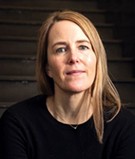
Kate O'Neill
Bio:
In “Hooked: Stories and Solutions from Vermont’s Opioid Crisis,” writer Kate O’Neill explores the state’s opioid epidemic and efforts to address it using traditional journalism, narrative storytelling and her own experiences. Her sister, Madelyn Linsenmeir, died in October 2018 after years battling opioid addiction.
In “Hooked: Stories and Solutions from Vermont’s Opioid Crisis,” writer Kate O’Neill explores the state’s opioid epidemic and efforts to address it using traditional journalism, narrative storytelling and her own experiences. Her sister, Madelyn Linsenmeir, died in October 2018 after years battling opioid addiction.
More By This Author
Latest in Category
Speaking of...
-

Burlington Has Surpassed Last Year's OD Tally — and It's Only August
Aug 4, 2023 -

Vermont's Relapse: Efforts to Address Opioid Addiction Were Starting to Work. Then Potent New Street Drugs Arrived.
Jun 14, 2023 -

A Recovery Center in Johnson Is Helping Reinvigorate the Town
Dec 14, 2022 -

Meth Use Is Growing Around Burlington — and Could Portend More Problems for Vermont
Oct 12, 2022 -

Brenda Siegel Brings the Experience of Poverty to Her Campaign for Governor
Sep 14, 2022 - More »





























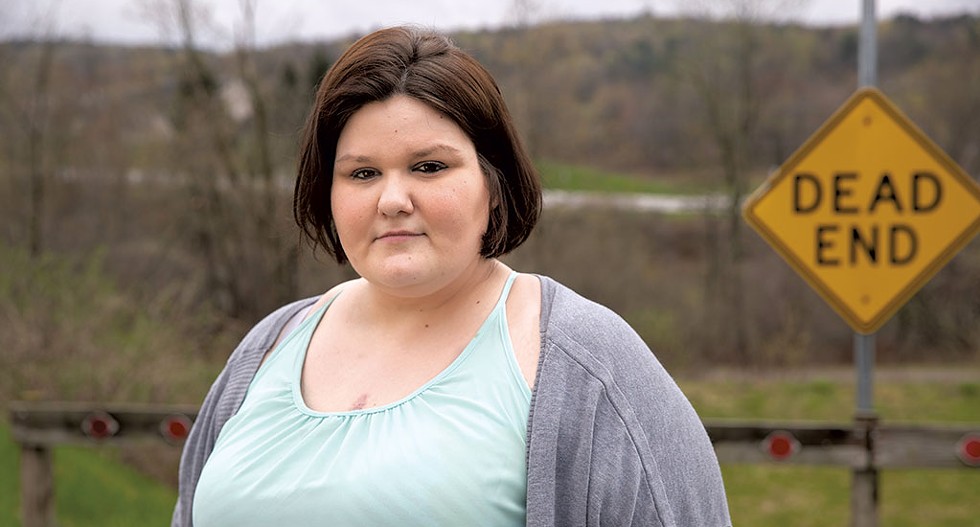
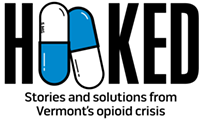

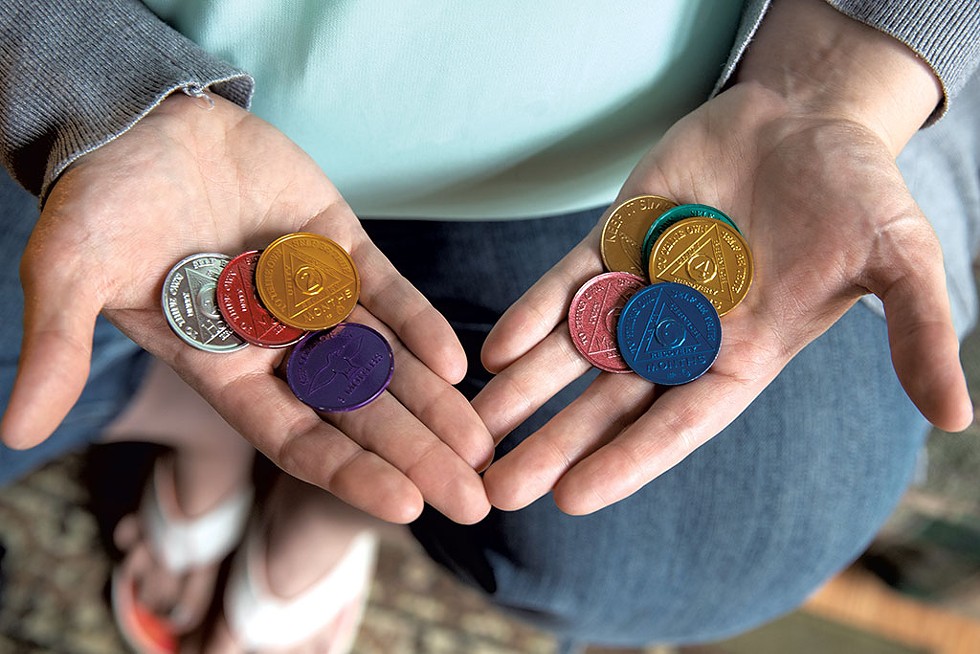
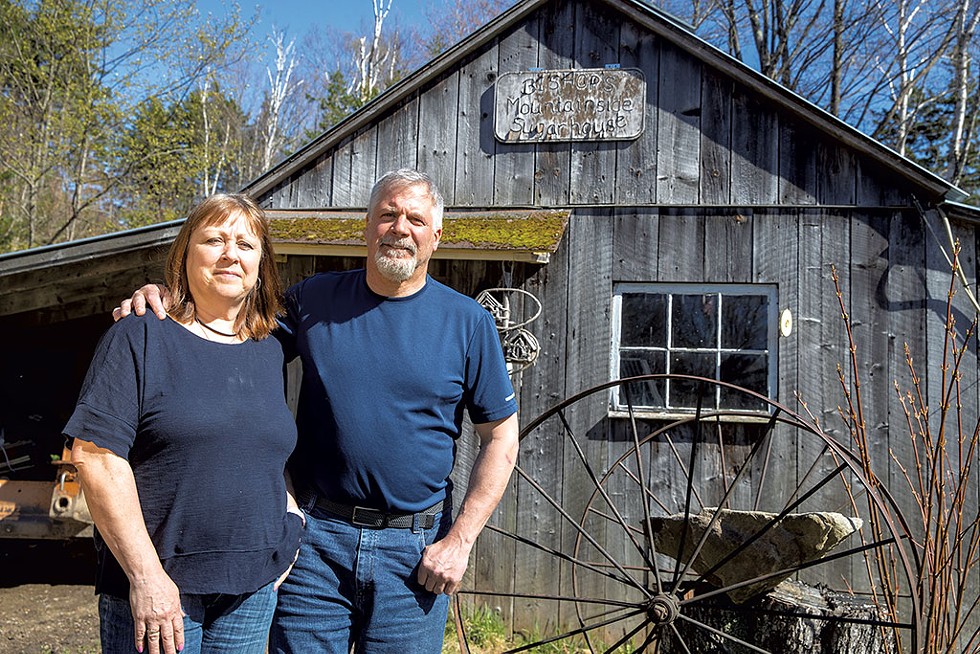
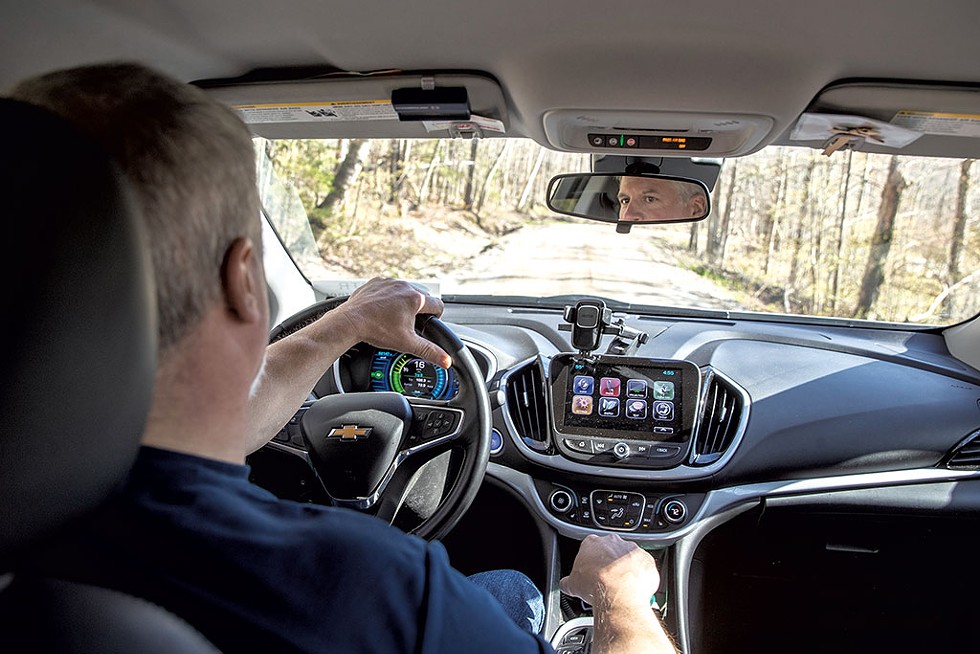
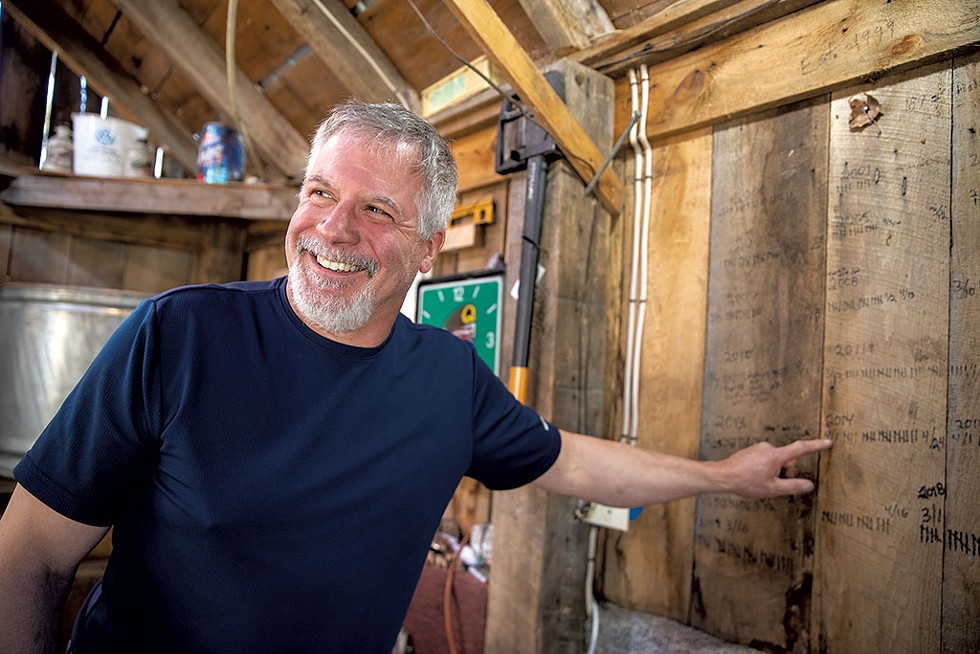
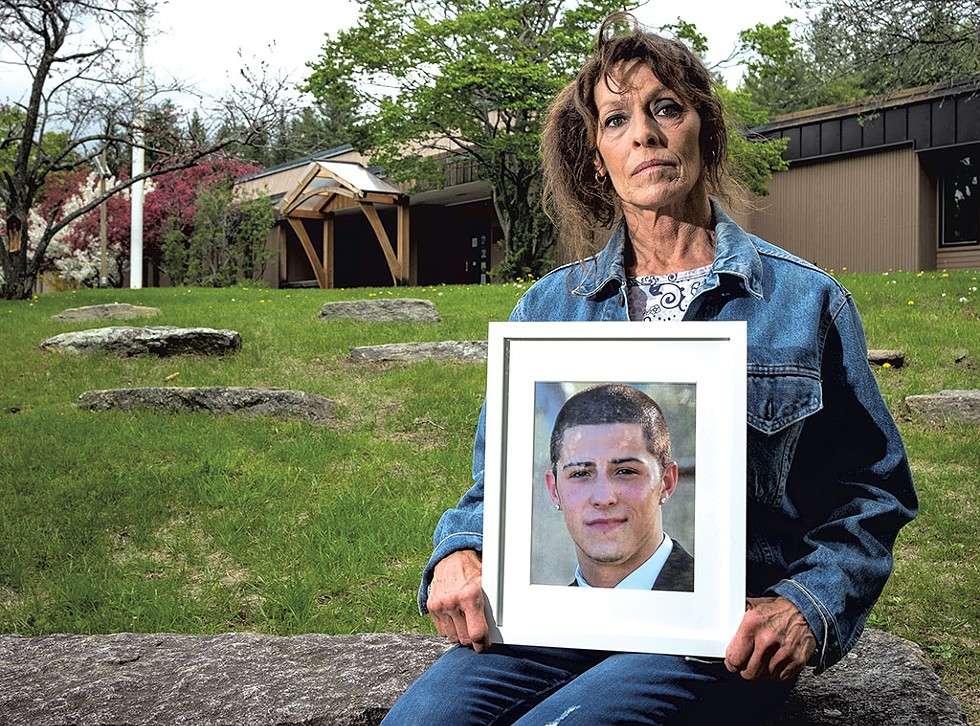
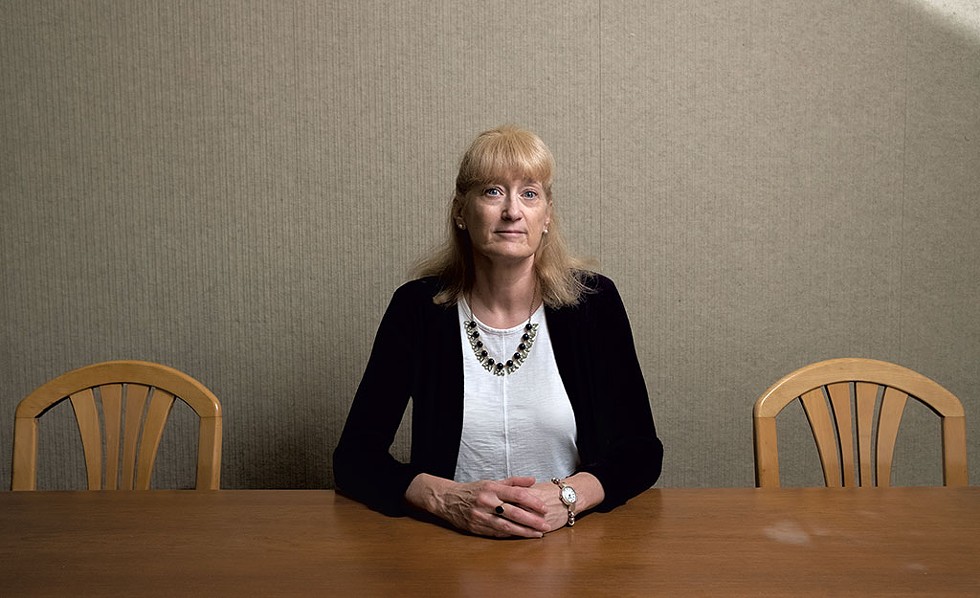

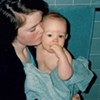
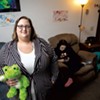


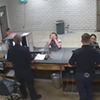
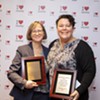
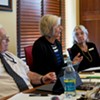










find, follow, fan us: